By Warren Brush
It has been special week for me in Sodo, Ethiopia at Uryadi’s Village, a permaculture designed orphanage in development for babies and children who have no one to care for them and many with special needs.
Currently, the children are living in a small facility in the center of town until the orphanage is completed later this year. An important part of the vision of this orphanage is to grow healthy food for the kids and their caretakers, immerse them in a non-institutional setting amidst that which sustains them, and to develop a demonstration site of integrated, whole-site design for the community.
We have spent the week with the local team on the ground completing the earthworks and rainwater harvesting structures, extending the plantings, developing the irrigation systems, further planning the nutrient cycling systems, continuing to build the homes and community spaces and loving up the beautiful children who will spend much of their lives on this site.
My hats-off to the work of Uryadi’s Village and the local committed staff for approaching the development of the orphanage in a holistic manner and weaving the tools of permaculture into their vision.
A panoramic view of the main village site.
This is some of the crew working on the water harvesting structures. The stones you see are armor for the spillway that leads to the next swale. Just to the left of this photo is the lowest point of the land where the last spillway is being installed this week. Once the land is fully saturated with water, the overflows will continue on down slope in the existing drainage on the next property.
Already, food is being grown to feed the orphans. Even with construction happening, the interstitial spaces are opportunities for nutrition.
The culvert leading to the top swale, gardens and pathways.
The main agricultural area. The soils were so poor we have had to grow a lot of our fertility.
Making a spillway. Notice the yellow flags. We have sited the water line all the way along the swale to ensure we have enough freeboard to hold the water. The spillway sets the level of water capacity.
This is the lowest place on the flat where the main construction of the orphanage is being built. This culvert brings the drainage from the hardscape on that upper flat to the uppermost swale in the agricultural area to slow, spread, and infiltrate rainwater for biological production and aquifer recharge.
One of my favorite perennial ground covers in the tropics: Desmodium.
Quail Springs Pemaculture offers a two-week Permaculture Design Course for International Development. See below for more details:

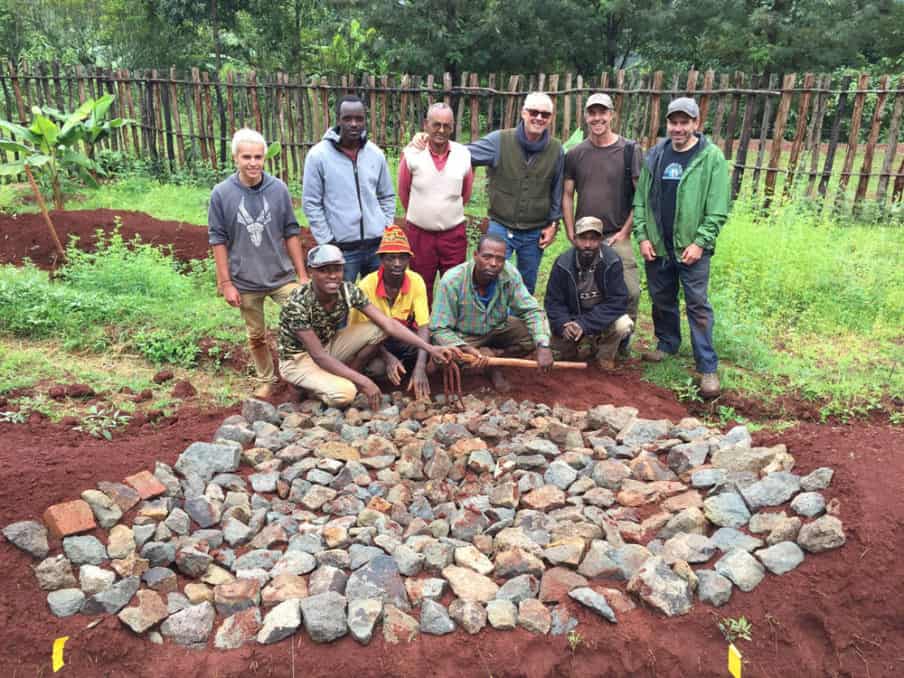
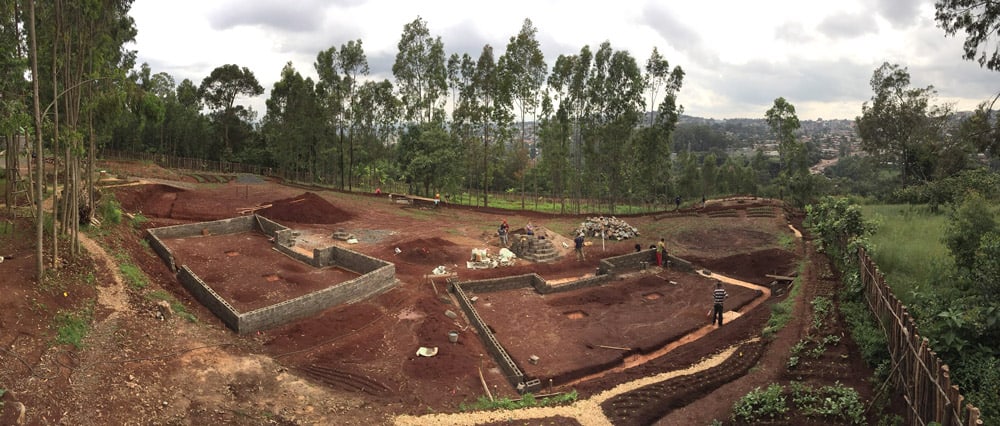
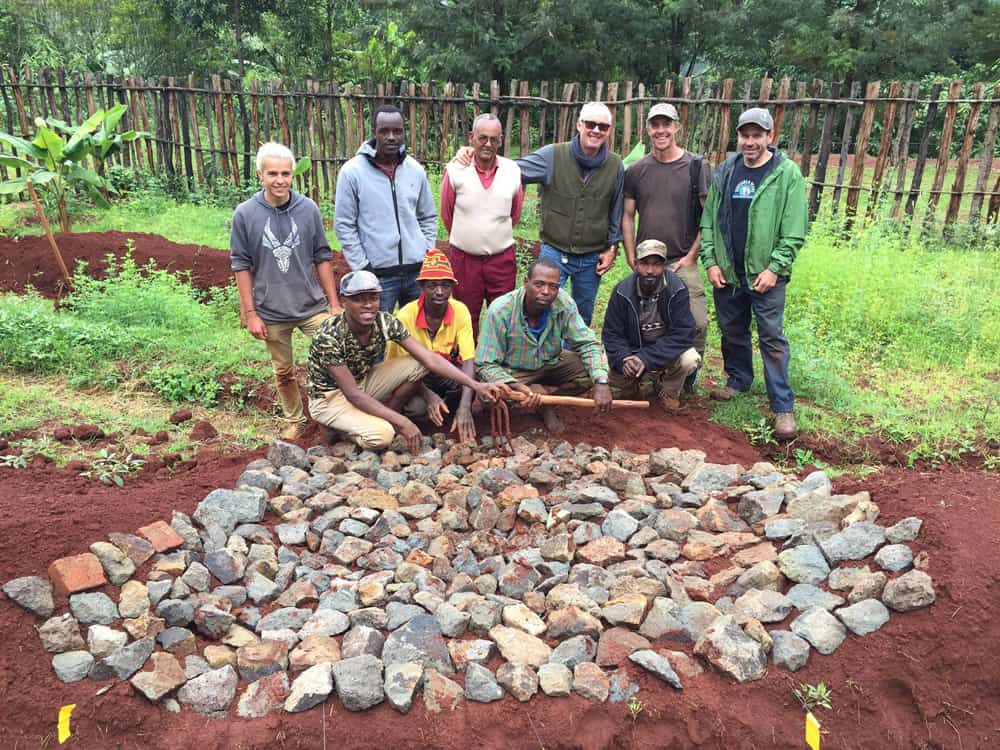
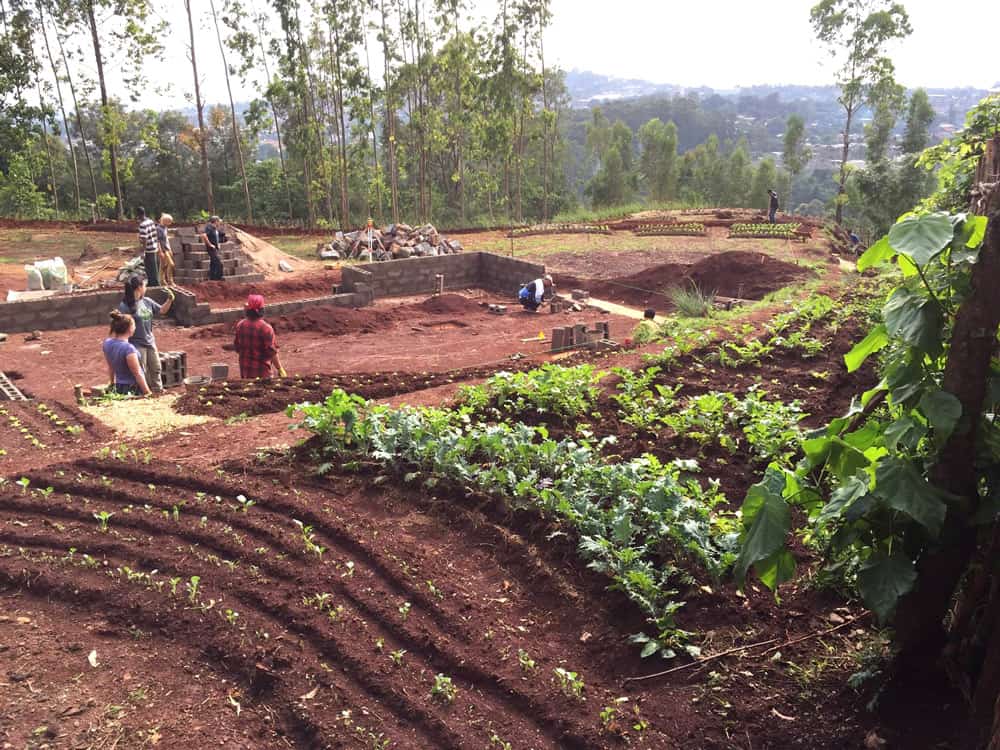
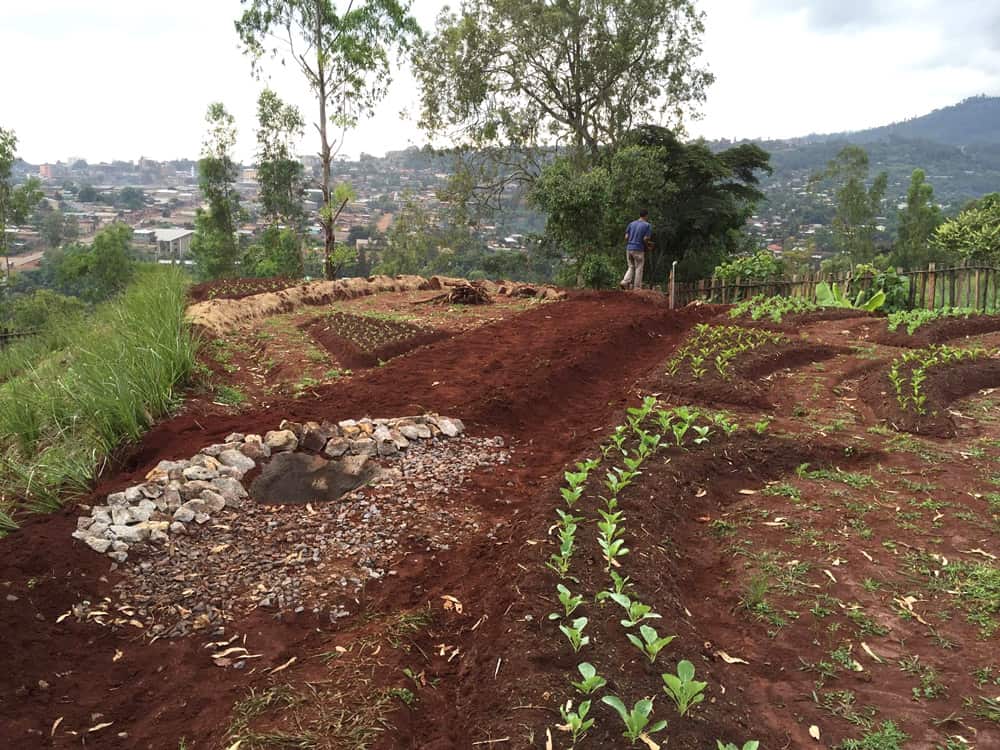
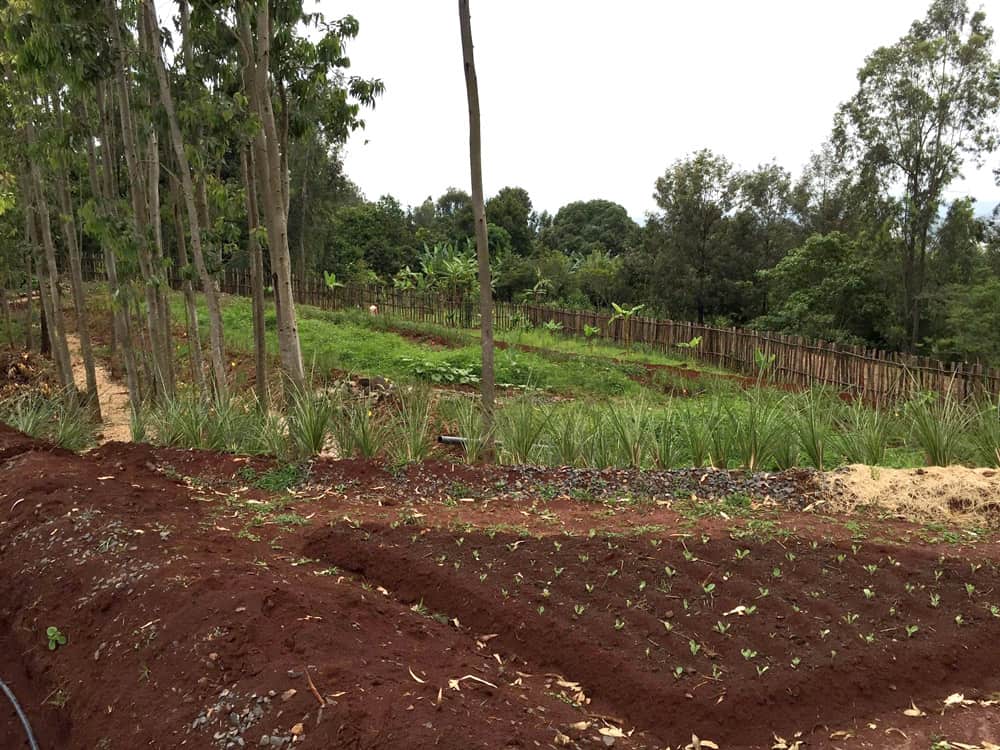
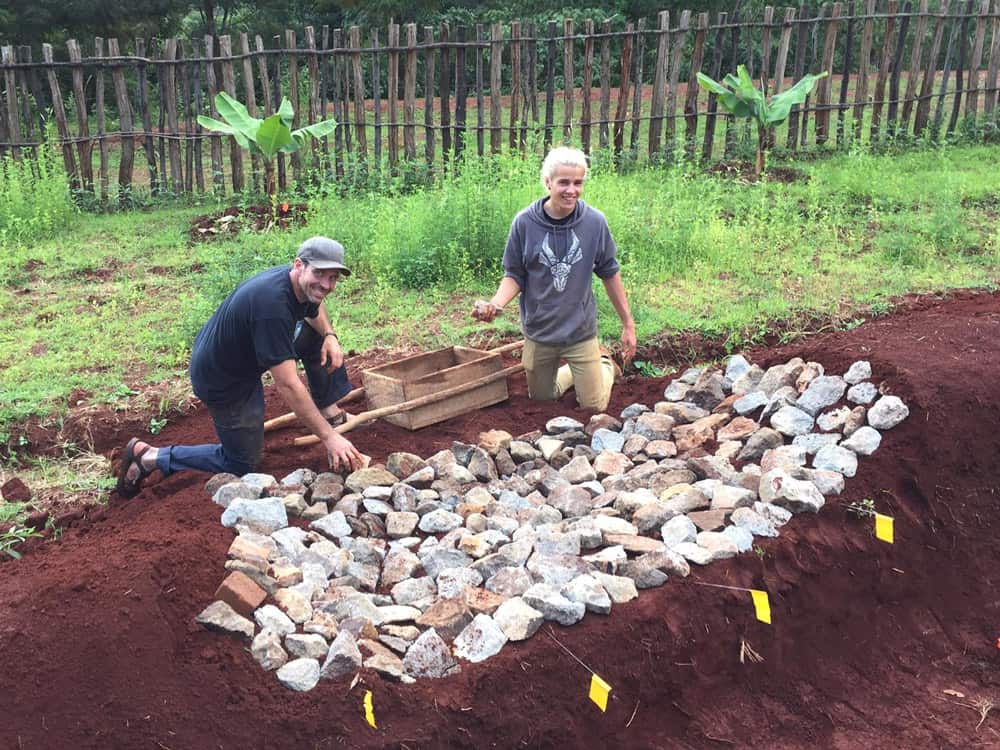
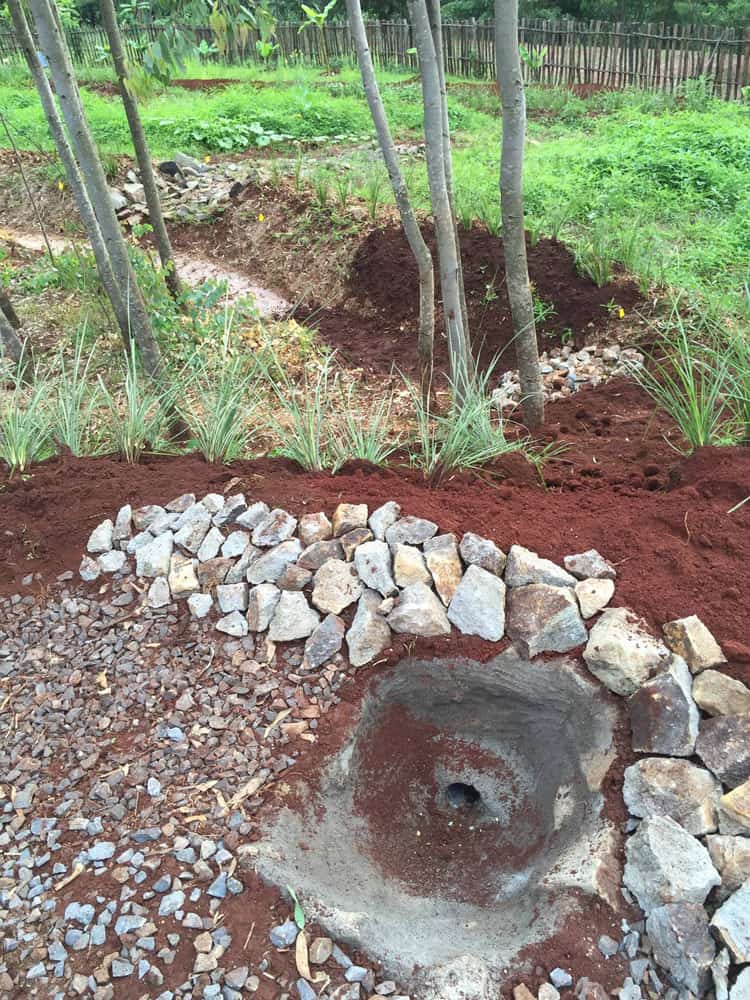
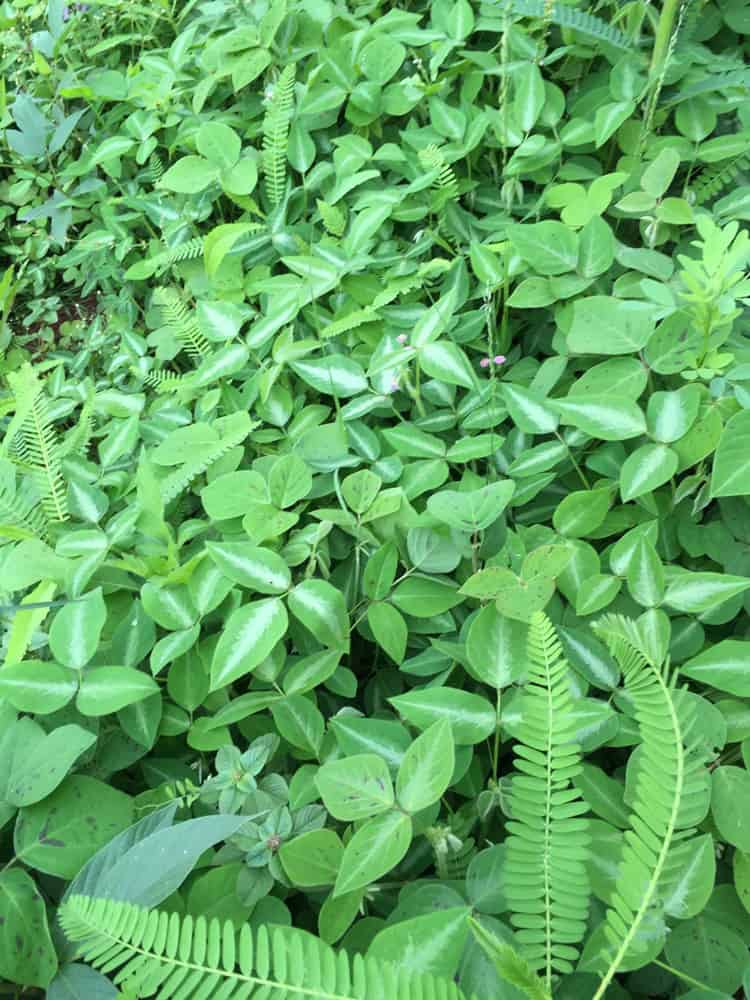
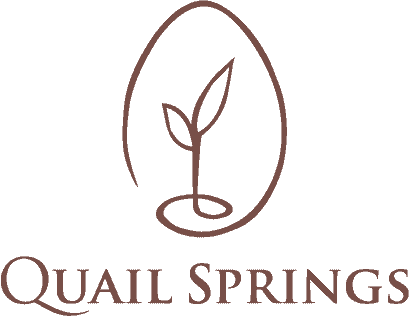
Comments 2
Warren……so inspiring! Beautiful photos! Wish we could have you here in Rwanda! So close!
Am busy with babies here. Have not started gardening yet except for a series of pots full of strawberry plants. Good luck with your great work! MJ
Beautiful photos, Warren. It’s intriguing to see the poor red soil alongside the dark improved soil you all have cultivated. I’ve seen similar results many times here in the southwestern US. Good to see you all doing the good work of permaculture there on the other side of the globe… Keep up the good work!